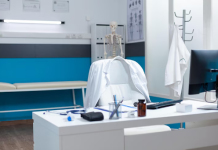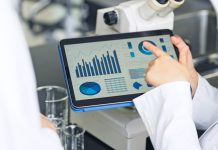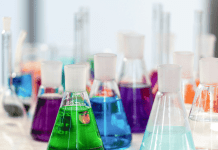The evolution of COVID-19 testing has been remarkable. At first, we only had PCR tests. But now, medical experts can access various options – like rapid antigen tests. Reditus Laboratories, with their medical diagnostics skills, played a key role.
These testing improvements have helped the fight against the virus. PCR tests detect viral genetic material. But they can take time and need special labs. Rapid antigen tests give results quickly. They’re available at point-of-care settings – not as sensitive, but quicker and more accessible for screening large populations.
Rapid antigen tests have many advantages. They are affordable and made for non-medical personnel. This makes them great for mass testing or screening people at workplaces or schools. Quickly identifying and isolating positive cases helps break transmission chains.
To get more accurate results from rapid antigen tests, combining them with PCR tests can help. A two-step approach confirms positive immediate antigen test results with PCR. This reduces false negatives and increases confidence in the results.
Table of Contents
The Importance of COVID-19 Testing
COVID-19 testing is essential to stop the virus from spreading and keep people safe. It helps to identify infected people, so they can isolate and start contact tracing. Additionally, it gives us data to monitor and understand the disease. As testing methods improve, like the switch from PCR to rapid antigen tests, it’s easier to get fast, accurate results.
Reditus Laboratories is a major player in providing dependable diagnostic solutions. They rely on their medical science knowledge to increase testing capacities. They are dedicated to innovation and made rapid antigen tests, which give quick, accurate results and are invaluable during the pandemic.
Rapid antigen tests have more benefits than traditional PCR tests. Results are available within minutes rather than hours or days, so patient and infection control decisions can be taken quickly. These tests are convenient so they can be used in different places, like airports, schools, workplaces, and high-risk areas.
The PCR Testing Method
To understand the PCR testing method, delve into how PCR testing works and the advantages and limitations it presents. This will give you a comprehensive understanding of this widely used testing technique.
How PCR Testing Works
PCR testing is a powerful tool used to detect genetic material. It amplifies specific DNA regions, allowing scientists to identify & quantify the target sequence. The process has 3 steps: denaturation, annealing & extension.
In denaturation, the DNA sample is heated to separate double-stranded DNA into single strands. This lets primers bind to their complementary sequences. Primers are short pieces of DNA designed to match target regions.
The temperature is lowered & in annealing, the primers attach themselves to their sequences on each strand of DNA. This sets up replication.
In the extension step, an enzyme adds nucleotides to each primer. This creates new strands of DNA. This happens multiple times, increasing the amount of DNA present exponentially.
PCR testing is precise & sensitive. It can detect even minute amounts of genetic material accurately. It has revolutionized fields like medical diagnostics, forensic science & genetic research.
To get accurate results, strict laboratory protocols are essential for PCR testing. The preparation of reagents & calibration of equipment is necessary for reliable outcomes.
Advantages and Limitations of PCR Testing
PCR testing has many benefits. It’s susceptible and can detect even small amounts of organisms or substances. Plus, it gives quick results – ideal for emergencies. It’s also specific, correctly identifying target DNA or RNA. However, it requires special equipment and personnel for accurate and reliable results. False positives due to contamination are also possible.
To make PCR testing better, there’s qPCR. It quantifies the material being tested, so researchers and clinicians can tell how much is present. This improves disease tracking and treatment. Scientists are also working to streamline sample processing and optimize the primer design to make PCR more accessible and cheaper.
In one village, PCR testing identified an outbreak of a rare disease that baffled doctors for weeks. The technician quickly did the tests on patient samples using mobile equipment. Results revealed the pathogen causing the outbreak. Containment measures were put in place, saving lives.
The Shift to Rapid Antigen Tests
To address the shift to rapid antigen tests with a focus on Reditus Laboratories’ expertise in the medical field, let’s explore the sub-sections: Understanding Rapid Antigen Tests and Key Differences between PCR and Rapid Antigen Tests. These sub-sections will delve into the basics of rapid antigen tests and highlight the contrasting features between PCR and quick antigen testing methods.
Understanding Rapid Antigen Tests
Rapid antigen tests are an integral part of the fight against COVID-19. They detect proteins on the virus’s surface to spot current infections. Compared to traditional PCR tests, they offer a faster and easier option.
The main benefit of rapid antigen tests is the quick results. This speedy outcome allows infected people to be identified and isolated immediately, hindering the further spread of the virus. These tests are inexpensive and can be done outside a lab, making them available to everyone.
Unlike PCR tests, which detect the virus’ genetic material, rapid antigen tests detect viral proteins. Although not as sensitive as PCR tests, they still find people with high viral loads who are most likely to pass the virus on. Plus, they are helpful in places such as workplaces, schools, and healthcare facilities for screening and uncovering outbreaks swiftly.
Rapid antigen testing should not replace other methods like wearing masks and social distancing. However, combined with these preventive measures, they can help stop the virus from spreading more efficiently. We can protect ourselves and our communities by recognizing and isolating those infected.
Key Differences between PCR and Rapid Antigen Tests
PCR and Rapid Antigen Tests have their distinguishing features. PCR tests are exact but take longer and need laboratory processing. On the other hand, Rapid Antigen Tests give results fast but are less sensitive than PCR tests. The difference is in the methods: PCR tests look at the virus’ genetic material, while Rapid Antigen Tests detect proteins made by the virus.
Rapid Antigen Tests come out on top for cost and availability. They are cheaper and can be used in clinics or pharmacies without special equipment. PCR tests, however, need labs with the right gear and skilled professionals, making them costlier and more drawn-out.
Both tests work well for detecting active COVID-19 cases. But there are limits. Rapid Antigen Tests may give false-negative results if the virus quantity is low or tested too early when antigens are still forming. PCR tests are more sensitive and can detect small amounts of viral genetic material, but they may still try positive weeks after infection due to bits of viral RNA left in the body.
Reditus Laboratories: Driving Innovation in COVID-19 Testing
To drive innovation in COVID-19 testing, Reditus Laboratories takes center stage. Get ready to explore Reditus Laboratories’ impact on medical diagnostics. Starting with an overview of this groundbreaking laboratory, we’ll dive into their exceptional expertise in medical diagnostics. Brace yourself for an enlightening journey into the evolution of COVID-19 testing!
Reditus Laboratories is a driving force in the COVID-19 testing realm. They are well-known for their accurate and efficient diagnostic solutions. Their commitment to innovation is seen through their use of cutting-edge technology and state-of-the-art equipment. This enables fast and accurate test results for healthcare professionals.
Expertise in Medical Diagnostics
At Reditus Laboratories, they specialize in medical diagnostics. Their team of highly skilled professionals drives innovation in COVID-19 testing. Their knowledge and experience ensure accuracy and reliability.
Years of experience give them the skills to meet high standards. They use state-of-the-art tech and stay updated with advancements. This gives them timely and accurate results, helping healthcare professionals make informed decisions.
The Evolution of COVID-19 Testing
To understand the evolution of COVID-19 testing, dive into the challenges faced in initial testing methods. Explore the development of rapid antigen tests, their impact, and their future potential. Discover how these advancements have transformed the testing landscape and offer new solutions for diagnosing the virus.
Challenges Faced in Initial Testing Methods
Testing for COVID-19 initially had many issues. One was the need for testing kits, making testing slow and inadequate. Plus, accuracy was an issue, as false negatives and positives were common.
To fix this, it is vital to up the number of available testing kits. Ramping up production, secure supply chains, and efficient distribution can make more tests available quickly. This way, cases can be identified and contained earlier.
To get better accuracy, investing in research and development is needed. This could mean exploring new testing methods or improving existing ones to reduce false results. Also, healthcare professionals need proper training and certification to ensure consistency and reliability.
Technology can help too. Automation and AI can streamline testing, reducing errors and increasing efficiency. Digital appointment scheduling and result notification platforms can improve communication between healthcare providers and patients.
The Development of Rapid Antigen Tests
Rapid antigen tests are remarkable for detecting viral proteins from a swab sample. This avoids laborious lab processes resulting in faster results. Consequently, testing is more straightforward and accessible, enabling quicker identification and isolation of infected persons.
Moreover, healthcare professionals can run these tests outside of labs or self-administered with correct instructions. This saves time and reduces reliance on testing centers, permitting broader testing initiatives.
To affirm their accuracy and dependability, regulatory authorities and independent orgs have conducted tests on rapid antigen tests. The US FDA study revealed that some rapid antigen tests were susceptible to detecting COVID-19 infections compared to standard PCR tests, highlighting their capability to rapidly identify infected persons for effective disease management.
Impact and Future Potential of Rapid Antigen Tests
Rapid antigen tests have made a massive difference in the battle against COVID-19. They provide quick results, making it easy to identify who is infected. Plus, they’re portable and simple to use. They’re valuable in many places, like healthcare facilities, airports, and schools.
The advantages of rapid antigen testing are its speed and accuracy. It can detect specific viral proteins in the body quickly. This allows medical professionals to take action to prevent the virus spread. So, these tests have been essential in controlling outbreaks and cutting transmission rates.
Rapid antigen tests have lots of potential. They’re affordable and easy to use, meaning many people can use them. Plus, self-administered tests are emerging, allowing people to monitor their health.
The roots of rapid antigen testing go back decades. But it was during the pandemic that we understood their importance. They made mass testing possible and allowed authorities to act fast during outbreaks. These tests have significantly impacted how we test for and manage infectious diseases.








